It is well known that the most important component of our food is proteins. Although carbohydrates are very important for providing the body with energy, they can be obtained from both fats and amino acids. Fats aren't a problem either. But proteins - both muscle and proteins connective tissue, and, most importantly, enzymes are obtained only from amino acids. Of these, 14 can be synthesized in the body, and 8, like vitamins, must enter the human body from food. If during hunger the body, having depleted its reserves of fat and carbohydrates, needs to maintain energy processes takes on squirrels - trouble. In children, there is a lag in physical and mental development, in adults - hunger edema, a decrease in temperature and a weakening of all types of vital activity.
A person needs only 120 g of proteins per day, but there are not enough of them in plant foods, and plant proteins are poorly absorbed. In my opinion, meat, fish and dairy products should definitely be included in the diet. If the food lacks certain amino acids (even if they are not essential), they can be taken in the form of medications, such as glutamic acid and histidine. Methionine is especially often used, which is absolutely necessary for degenerative processes in the liver and heart, and glycine as a sedative. (But we'll talk about that later.)
Gamma-aminobutyric acid
For a long time it remained unclear how the reduction in overall brain activity is ensured - for example, during sleep. Scientists guessed that there must be a substance, perhaps a transmitter of nerve impulses - a mediator, which would ensure a decrease in activity nervous system not in individual cells or even in nerve nuclei, but in the brain in general. And such a universal inhibitory mediator was discovered. It turned out to be gamma-aminobutyric acid, which we will henceforth call for short - GABA.
GABA was first discovered in the brain by Yu. Roberts and his colleagues (and independently by Jörg Avapara) in 1950. Since the butyric acid molecule has a chain of three carbon atoms (and the fourth in the COO group), then according to systematic nomenclature the acid should be called aminobutanoic, but acetic acid no one calls it ethane (Fig. 1).
The building blocks of proteins are alpha amino acids: those in which the amino group is attached to a carbon atom located next to the carboxy group. What can gamma amino acid be useful for?
It is known that when the skin (as well as any other sensory organs) is irritated, electrical potentials called primary responses arise in the corresponding areas of the cerebral cortex. In 1963, the English scientist K. Krnevich brought a pipette filled with a very weak GABA solution to one of the neurons reproducing primary responses. He was the first to establish that the amino acid flowing from the pipette was capable of completely suppressing the occurrence of impulses in the sensitive cells of the cerebral cortex. Japanese researchers made it even simpler: they brought a light electrode to the surface of the brain, and placed a filter paper moistened with a GABA solution “on top” of it. The advantage of such an experiment was not only its simplicity, but also the fact that the amplitude of the recorded potentials, formed not by one, but by several neurons at once, approximately reflects the strength of the impact. In this case, of course, a higher concentration of the substance was required, but the effect turned out to be the same - the potentials were suppressed. Later, similar experiments were reproduced by the author of this article (Fig. 2).
It was further found that GABA can inhibit not only evoked, but also spontaneously occurring potentials, both in the cortex and in other areas of the brain. In this case, GABA is synthesized and released precisely in those brain nuclei that are responsible for its inhibition. It is believed that GABA mediates the transmission of inhibitory impulses in approximately 30–50% of nerve contacts. How does she do it?
Contacts of nerve fibers with cells - synapses functioning with the participation of GABA - are not fundamentally different from others. GABA is synthesized in the cytoplasm of the neuron and, with the arrival of an impulse, is released into the synaptic cleft between the endings of the nerves and the adjacent portion of the neuron sheath (Fig. 3). Specialized receptor proteins (from the Latin recipe - take) that interact with GABA have also been discovered. As a result of this interaction, channels open in the membrane of the receiving neuron, allowing negatively charged chloride ions, which are contained in excess in the intercellular fluid, to enter the cell. The penetration of chlorine causes a state of hyperpolarization in the cell, that is, inhibition (recall that the transfer of excitation occurs due to the opposite process: depolarization of the neuron membrane). It has now been established that GABA receptors are also found in blood vessels, especially in the brain.
Scientists have compiled maps that indicate exactly where GABA acts as an inhibitory transmitter and how great its significance is in each area. Although the concentration of this acid varies in different parts of the brain, it can be found almost everywhere. We calculated the approximate total number of its molecules - and were surprised. It turned out that the brain contains GABA in much larger quantities than required for mediator functions. Why, one might ask, so much?
It was natural to assume that GABA performs some other functions in the brain. And in fact, it turned out to be an obligatory participant in many exchange processes. It affects the transport and utilization of glucose, the respiration of cells, the formation of energy reserves in them, increases the resistance of cells and the brain as a whole to oxygen starvation, and activates protein synthesis. The variety of physiological and biochemical functions performed by GABA, as well as data on the disruption of its formation in some psychopathological and neurological disorders- all this spoke of its enormous significance. Pharmacologists could not pass by such an amazing molecule.
In the search for new drugs, scientists remembered that plants, millions of years ago, learned to synthesize compounds that successfully block the effects of mediators. In the case of GABA, these are the alkaloids picrotoxin (contained in the seeds of tree vines of the genus Anamirta, which grow in tropical Asia - Indonesia, India, New Guinea, the Moluccas, as well as in various types of astragalus) and bicuculline (isolated from the leaves of Dicentre cucullaria of the fume family ). They tried to use both of these substances to activate the brain, but they turned out to be too dangerous, since even in negligible doses they caused severe convulsions. (The natives once prepared poison from anamirtha for “chemical” fishing and for arrows.) Now, to excite the respiratory center, a synthetic drug bimegride is used, which also blocks the effects of GABA, but more selectively and not so actively.
The first drug to activate GABA receptors was this acid itself. pure form. Her drug called “gammalon” was developed in Japan, and later exactly the same domestic product appeared, called “aminalon”. Despite the fact that both drugs have been used for quite some time, their therapeutic effects remain unclear. The fact is that due to low solubility in fats, GABA almost does not enter the brain tissue from the blood - however, its central effects are beyond doubt and are well studied. The explanation of the valuable properties of gammalon-aminalone by the ability of GABA to dilate blood vessels seems unsatisfactory.
Pharmacologists know that to increase the permeability of substances into the brain through the blood-brain barrier that separates the blood (essentially, aqueous solution) from brain cells saturated with lipids, they need to “weight” a radical that is highly soluble in fats. Leningrad pharmacologists, including my friend Professor I.P. Lapin, proposed introducing a phenyl radical into the GABA molecule, which turned it into the drug phenibut, which easily overcomes the barrier - and has a pronounced inhibitory effect (Fig. 1)! Today, phenibut is a common daytime tranquilizer, and, what is especially valuable, it does not interfere with driving.
Over time, it was established that in brain tissue GABA loses its amino group, which is replaced by hydroxyl. This substance is called gamma-hydroxybutyric acid. If injected directly into the blood, it not only penetrates the blood-brain barrier, but also has such a strong inhibitory effect on the brain that its sodium salt, sodium hydroxybutyrate, can be used as a means for general anesthesia (more precisely, to turn off consciousness) during operations. Think about it: a person produces a substance in his brain that can cause a state of anesthesia! How can one not remember about operations under hypnosis?
The second way to improve the penetration of a drug molecule into brain tissue is to attach some naturally occurring substance, such as a vitamin, to it. In particular, the drug picamilon is obtained by combining nicotinic acid, also known as PP, with GABA. As expected, picamilon dilates blood vessels in the brain and has a calming effect in cases of anxiety, fear, increased irritability, and also increases resistance to physical and mental stress.
The creation of GABA-like drugs and the study of their effects made it possible to talk about the existence of two main functions of GABA - mediator and metabolic. The mediator function is associated with the participation of GABA in regulating the level of wakefulness, motor activity, vascular tone, maintaining a high convulsive threshold and partly improving memory and thinking. Metabolic function is the provision of energy to the brain, resistance to oxygen starvation and other harmful influences.
Nootropics
In 1963, the Belgian company UCB obtained a compound that was a gamma-aminobutyric acid coiled into a ring with some additional radicals. When studying this compound, Professor K. Giurji and his collaborators found that it actively improves memory and facilitates the learning process, that is, it affects the higher intellectual functions of the brain. Since in Greek thinking and reason are noos, and affinity is tropos, the new medicine was called “nootropil”. And in 1972 the term “nootropic drugs” appeared.
According to WHO experts, nootropic drugs activate the ability to learn, improve memory and mental activity, and also increase the brain’s resistance to aggressive influences.
In Russia, nootropil is produced under the name “piracetam”, and around the world under more than 30 names - further evidence of its extraordinary popularity. Indications for its use are memory impairment, decreased concentration, mood changes, behavioral and thinking disorders in vascular diseases, injuries and sclerosis of the brain, as well as mental disorders in chronic alcoholism. The drug is well tolerated, but in some people it causes unexpected reactions: excitement or, conversely, drowsiness, sometimes dizziness, and sometimes increased sexuality.
Today, the group of nootropic drugs does not have strictly defined boundaries. In addition to the already mentioned aminalon, phenibut and picamilon, it also includes deonol (nooclerin), idebenone, meclofenoxate, nicotinoyl-GABA and pantogam. All these drugs are metabolic and, to some extent, antioxidant. Conventionally, nootropic drugs include drugs that have a pronounced ability to cause dilation of cerebral blood vessels: vinpocetine (Cavinton), complamine, trental, cinnarizine, etc. Caffeine and some vitamins can also be considered nootropic: B6, B15, BC, and B12.
If we consider the nootropic effect as such, then we can point out that it is based on three characteristic properties (which are expressed to varying degrees in different drugs): firstly, they restore the balance between excitatory and inhibitory processes in the brain, secondly, they activate metabolism and energy processes in nerve cells, thirdly, increase the endurance of neurons during oxygen starvation and membrane toxic effects.
IN recent years The idea of nootropic drugs has changed somewhat. It is expected that the next generation of drugs in this group will not only activate higher integrative functions of the brain, but also restore memory and thought processes, reduce deficits arising from various types of damage to the nervous system and increase the body's resistance. These funds will transform the life of mankind, relieving them of the consequences of brain diseases and ensuring active aging. And perhaps they will allow us to treat congenital or acquired dementia.
GABA receptors have very interesting feature: they are covered with other receptors that also regulate the process of inhibition, both through GABA receptors and independently. Among these “companions,” the receptors for barbiturates, alcohol and, most importantly, benzodiazepines are today some of the most common and valuable drugs with tranquilizer, muscle relaxant, ataractic, anticonvulsant and hypnotic effects. They will have to devote a separate section.
Benzodiazepines are the main tranquilizers
The word “bedlam”, meaning “total disorder,” comes from the name of the largest 14th-century psychiatric hospital in London. There really was something completely disorderly going on there: patients with in different forms psychoses were kept in common rooms. Some of them behaved so violently that they became dangerous to others. Then they were put in a special chair, like an electric chair, to which not only the arms and legs, but also the head of the unfortunate person were tied. The patient, unsuccessfully trying to break free from his bonds, gradually became tired and calmed down, calmed down. Such chairs were called tranquilizers (from the Latin tranquillo - I calm). This is where this now widespread term comes from.
Currently, tranquilizers are used to treat neuroses rather than psychoses - these are drugs from the arsenal of neuropathologists rather than psychiatrists. The most common causes of neuroses are loss of a sense of security and confidence in the future. There is an opinion that neurosis is “no big deal”, that everyone has neuroses, but this “not terrible” disease is sometimes followed by depression and suicide.
Tranquilizers replaced sedatives, which were given to people who could not find a place for themselves from excitement, restlessness or anxiety. Unfortunately, they could not relieve anxiety and fear, but they allowed us to somehow calm down, sit down and relax (hence the name: sedere - in Latin “to sit down”). The favorite sedatives were bromine and barbiturates, which caused total inhibition in the brain, which, of course, did not restore health and were far from harmless. Medicinal herbs act in a similar way, only weaker: valerian, peony and passionflower.
In the early 60s, the first benzodiazepine appeared - Librium (Elenium), which immediately interested doctors of all specialties. Particularly attractive were its central muscle relaxant (relaxing skeletal muscle) and anticonvulsant activities. Currently, there are many benzodiazepines. Anti-anxiety tranquilizers include elenium (in the Russian version chlozepid), sibazon (diazepam, relanium, seduxen), nozepam (tazepam) and phenazepam, which have a pronounced anxiolytic (anti-anxiety, from anxius - anxious, fear-ridden) and sedative effect. Benzodiazepines without sedative-hypnotic effects are called daytime tranquilizers. These include mezapam (aka rudatel).
All of these drugs are well tolerated, but many of them have been described as side effects: headache, drowsiness, impaired potency, decreased reaction speed, the ability to enhance the effect of alcohol, causing pathological intoxication with loss of consciousness. Phenazepam is especially dangerous in this regard, the effect of which can last from one to four days. With long-term use, addiction occurs, less often addiction, worsening mood, a person begins to take new drugs from this group... In a word, it is better to start treating insomnia not with phenazepam, but to take a more difficult path - for example, reduce coffee consumption in the afternoon and brew it before bedtime herbal tea: what if you don’t need a pill?
Now Russia is purchasing from abroad a relatively new drug, gidazepam, the tranquilizer effect of which is combined with an activating effect. It is also effective in treating migraines. Alprozalam is interesting for its antidepressant effect. In my opinion, these drugs should be in special demand, but this is not the case. Probably because their names do not appear on colorful posters and are not repeated in advertising videos.
Glycine as a mild tranquilizer
The second nonessential inhibitory amino acid, glycine, has had a quiet but well-deserved success, even though it is only an aminoacetic acid. There is little of it in brain tissue, but this small amount is absolutely necessary. Being brake mediator, glycine prevents the spread of an impulse arriving along the sensitive dorsal roots of the spinal cord to its other half and other segments. Natural antagonists of glycine that are unsurpassed in activity and bind to its receptors are tetanus toxin and the alkaloid strychnine, contained in the emetic nuts Nux vomica, also known as the fruits of St. Ignace. (Strychnine is a well-known poison, and emetic nuts are one of the most favorite medicines among homeopaths.) If the action of glycine is blocked, then the slightest irritation causes a tonic contraction of the muscles of the entire body, which takes on the opisthotonus position typical of strychnine or tetanus poisoning: arching with support on back of the head and heels. In modern scientific medicine, strychnine is rarely used. But glycine is gaining more and more popularity
The clinic has confirmed that (when used sublingually) not only enhances the effect of anticonvulsants, but also accelerates sleep, has an antioxidant, anti-stress, tranquilizing and nootropic effect, blocking the pituitary-adrenal system.
According to clinical data, glycine suppresses irritability and makes behavior more reasonable. At the same time, it is similar to tranquilizers only in its sedative effect, and in all other respects it is the opposite of them. Thus, it does not have a muscle relaxant effect, weakens the effect of alcohol, does not cause addiction, increases the speed of reactions, enhances mental performance, and with increasing dose its effect decreases. Glycine not only does not interfere with driving, but is recommended for drivers!
Let's face it, you can't always trust a clinic. But there is also very authoritative experimental data in favor of the fact that in a model of brain hypoxia with the occurrence of a heart attack, glycine prevents it more effectively than piracetam. At the same time, the turnover of GABA increases, the content of the main brain mediators increases or normalizes in many of its parts, especially in the area of ischemia. The journal Human Physiology (2001) reports that after three weeks of taking glycine twice a day, an increase in the speed of thought processes was recorded.
Today, indications for the use of glycine include stressful conditions, psycho-emotional tension, increased excitability, emotional lability, neuroses, vegetative-vascular dystonia, consequences of traumatic brain injury, encephalopathy, including alcoholic, sleep disorders... A real miracle is the effect of an ordinary amino acid that we consume with food and produced in our own body. Perhaps it is precisely such medicines that will open the path to health and longevity for people.
“Chemistry and life - XXI century”
Amino acid Gaba, pharmacological action, main indications and contraindications for use, side effects of the substance, dosage, tea and drugs to restore the level of GABA in the body.
Description of the amino acid Gaba
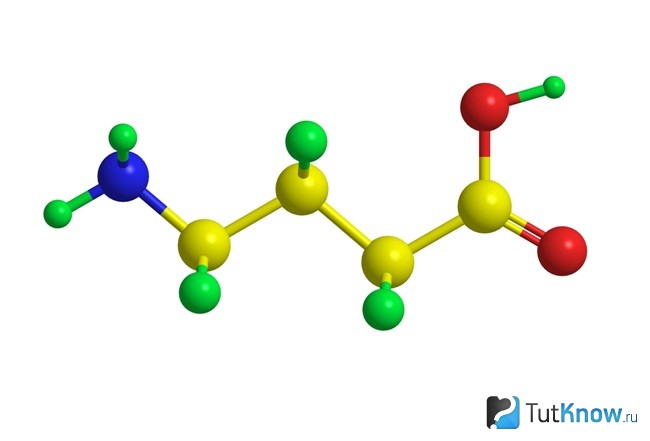
Gamma-aminobutyric acid is a substance that the body is able to synthesize on its own, but certain factors can deprive this ability. These include stress, alcohol abuse, excessive brain activity, low protein diet, which also lead to persistent bad mood, dissatisfaction life situation, lack of motivation. It turns out that a possible cause of these problems is a lack of GABA.
Thus, Gaba is the most important neurotransmitter of the brain. It has a suppressive effect on the central nervous system. Therefore, this amino acid can be called a tranquilizer. It is present in every element of the central nervous system, but the concentration may vary.
Due to the importance of this amino acid for the proper functioning of the human body, they learned to synthesize it artificially. Food supplements and teas are made on its basis. GABA is also used as excipients in medications.
In general, externally supplied GABA has a low ability to enter the brain. Therefore, it is advisable to take special agents that easily overcome the blood-brain barrier and are then converted into GABA under the influence of enzymes.
Beneficial properties of GABA substance

GABA is a nootropic drug designed to regulate nervous excitement, it has a calming effect. Its use in medicine is justified by a number of reasons beneficial properties. Let's describe them in more detail.
The use of a dietary supplement with the amino acid Gaba, for example, in bodybuilding is justified by the fact that this substance can have a positive effect on the endocrine system. It is known that GABA is found in high concentrations in the hypothalamus, and therefore plays an important role in regulating the activity of this part of the brain, which is responsible for regulating the sleep cycle, body temperature and pituitary gland activity. And the pituitary gland, in turn, regulates hormonal processes and controls the functions of the endocrine glands.
The consequence of this mechanism is the presence of the following indirect beneficial properties of GABA:
- Increasing the speed of metabolic processes;
- Stimulating the production of more growth hormone;
- Stimulation of the pancreas to produce insulin;
- Reduced blood sugar levels.
Useful for cardiovascular system Gaba properties:
- Reducing and normalizing blood pressure;
- Relief of symptoms associated with atherosclerosis;
- Reducing the intensity of dizziness and sleep disturbances caused by hypertension;
- Prevention of heart attack;
- Slight decrease in heart rate.
Effects of GABA on the nervous system

The pharmacological effect of the amino acid Gaba is based on the fact that GABA is the main neurotransmitter that takes part in the processes of central inhibition. It promotes rapid communication between nerve cells, as well as between nerve cells and muscles.
This substance activates energy processes in the brain, under its influence the respiratory activity of tissues increases, accelerated utilization of glucose by the brain occurs, and blood supply improves.
The beneficial effects of the amino acid Gaba can be described as follows:
- Reduced intracranial pressure;
- Increasing the mental and motor activity of patients who have suffered a stroke or head injury;
- Memory improvement;
- Relieving spasms in the blood vessels of the brain, thereby reducing the intensity of tinnitus and headaches;
- Relief of symptoms of depression and bipolar disorders;
- Increased mental clarity;
- Relief of manifestations of alcohol intoxication;
- Normalization of the mechanisms of wakefulness and sleep;
- Reduced susceptibility to seasickness;
- Reduced anxiety.
- Increased self-control.
Indications for use of the amino acid Gaba
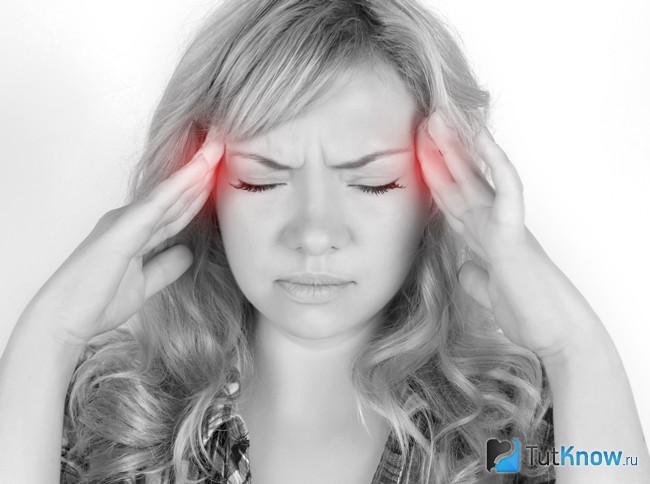
Indications for use food additives with the amino acid Gaba are as follows:
- Atherosclerosis, hypertension and other diseases associated with damage to the blood vessels of the brain;
- Cerebrovascular insufficiency;
- Parkinson's, Alzheimer's diseases;
- Epilepsy;
- Sleep disorders;
- Impaired memory, speech, attention;
- Discirculatory encephalopathy;
- Headache, dizziness;
- Alcoholic polyneuritis;
- Mental retardation in children;
- Alcoholic encephalopathy;
- Cerebral palsy;
- Dementia;
- Consequences of stroke or traumatic brain injury;
- Symptom complex of motion sickness ( seasickness);
- Endogenous depression, accompanied by difficulty in mental activity.
Contraindications and side effects of GABA

There are few contraindications for GABA, because this amino acid is an integral element in the functioning of the central nervous system.
So, taking products containing gamma-aminobutyric acid is contraindicated in the following cases: first trimester of pregnancy, children under 1 year of age, hypersensitivity, acute liver failure, hypotension, period of exacerbation of diabetes mellitus and kidney disease.
Side effects occur in case of overdose, the presence of individual intolerance, as well as in the first days of taking the substance.
They manifest themselves in insomnia or, conversely, in increased drowsiness, large fluctuations blood pressure, changes in heart rate and respiration. Some patients report a tingling sensation in the neck and face. Nausea and vomiting, dyspepsia, hyperthermia, and sensations of heat may occur.
Excessive amounts of GABA can lead to increased anxiety, shortness of breath and trembling limbs.
Instructions for use of the amino acid GABA
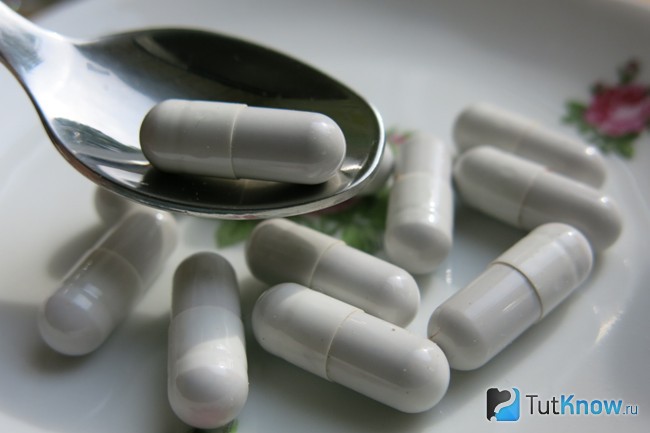
The instructions for use of the substance Gaba contain the following recommendations:
- Taken orally, before meals.
- For adults, the daily dose is up to 3.5 g. To achieve the effect, the minimum dose is 1.5 g per day.
- For children from 1 to 3 years: minimum dosage - 0.5 g, maximum - 2 g per day.
- For children from 4 to 6 years old: the minimum daily dose is 2 grams, the maximum is 3 g.
- For children over 7 years old, the dosage is 3 g per day.
- The daily dose is usually divided into 3 doses.
- The minimum course of treatment is 2 weeks, the maximum is 4 months.
- To eliminate motion sickness syndrome, adults take 0.5 g, and children 0.25 g three times a day for 3 days.
- In the fight against insomnia, the drug should be taken exclusively before bedtime. In the first week, the dosage is 2 g, in the second - 3 g, in the third - 4 g, in the fifth and subsequent weeks - 5 g.
- How to take Gaba for bodybuilding - immediately after training in a dosage of 3 g. This ensures the secretion of growth hormone.
What is Gaba tea
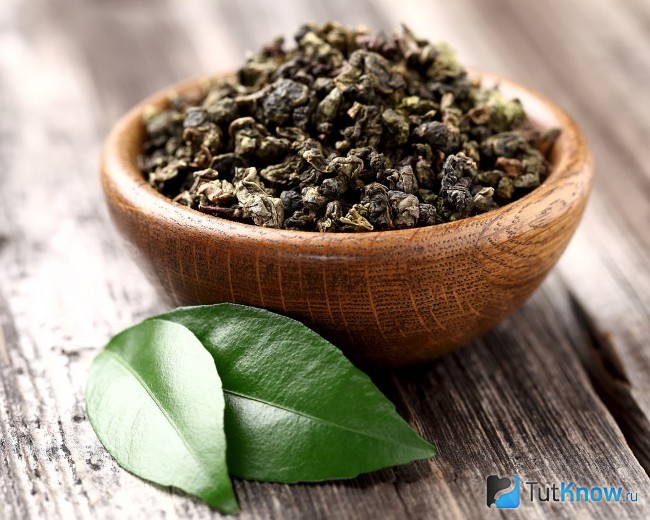
GABA tea is raw material processed in a special way to saturate the tea leaves with gamma-aminobutyric acid. It is noteworthy that even ordinary tea contains GABA, but in smaller quantities, and the usual brewing method does not allow this substance to be isolated into an infusion.
Gaba tea is made in several ways:
- First. After fermenting the tea leaf, it is placed in containers made of metal, hermetically sealed and the air is pumped out of them, then filled with nitrogen. This processing takes about 10 hours. In its process, GABA is naturally synthesized in the leaves. And then comes the roasting process.
- Second. The standard tea production technology includes an additional stage - spraying the tea leaves with GABA. This option allows you to increase the content of this substance hundreds and even thousands of times. It is noteworthy that replacing the airless treatment stage with spraying eliminates oxidation processes, which leads to the retention of more nutrients.
Taste qualities of Gaba tea: pleasant aroma, sweetish or sour taste, presence of a refreshing aftertaste.
Let's describe how to brew Gaba tea:
- To brew 3 grams of tea, use about 300 ml of clean water.
- Boil water and cool it to 80 degrees.
- Use small clay containers (teapot, cups).
- Pour in the tea and leave to steep for 5 minutes.
The price of Gaba tea depends on the manufacturer, manufacturing technology, and the presence of additives. In general, the cost of 50 g of tea starts at 450 rubles.
Review of drugs with the active ingredient GABA
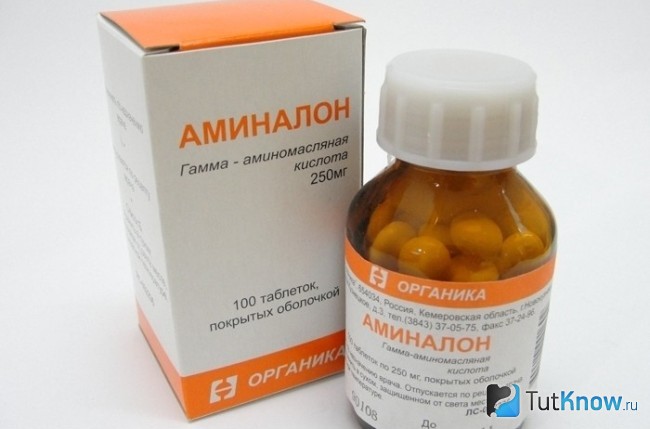
Here is an example of several common drugs whose action is aimed at replenishing the Gaba amino acid in the body:
- Aminalon. Sold in the form of capsules or tablets in a dosage of 0.25 g. The drug can enhance the effect of anticonvulsants and hypnotics. The cost of one package (100 tablets of 0.25 g) depending on the manufacturer varies from 240 to 450 rubles.
- Pantogam. The active ingredient is calcium salt of hopantenic acid. The formula also includes vitamin B5. The action of the drug is aimed at improving the metabolism of GABA. Produced in the form of syrup (100 ml, 10%), tablets (50 pcs., 250 mg). Cost - 430-450 rubles.
- Picamilon. A widely used remedy. The active ingredient is nicotinoyl gamma-butyric acid. Once in the brain, it breaks down into GABA and niacin, so the improvement of blood flow and vasodilation are added to the main properties of GABA. The cost of packaging the drug in the form of tablets (30 pieces, 50 mg each) is 90 rubles, in ampoules (10 pieces, 2 ml, 10%) - 130 rubles.
Preparations to increase the level of Gaba amino acid in the body can be purchased in pharmacies. There are a lot of offers on the Internet for the sale of Gaba tea, many of the options contain additives, for example, lavender. Therefore, everyone will be able to find exactly the product that, in addition to health benefits, will also bring taste pleasure.
Formula: C4H9NO2, chemical name: 4-Aminobutanoic acid.
Pharmacological group: neurotropic drugs/nootropics.
Pharmacological action: nootropic, stimulating metabolism in the central nervous system.
Pharmacological properties
Gamma-aminobutyric acid is one of the main mediators that take part in central inhibition. Gamma-aminobutyric acid activates energy processes, improves blood supply to the brain, increases the respiratory activity of tissues, improves the removal of toxic products and glucose utilization. Gamma-aminobutyric acid reacts with GABAergic (types A and B) receptors. Gamma-aminobutyric acid improves the dynamics of nervous processes in the brain, improves memory, increases thinking productivity, and has a moderate antihypoxic, psychostimulating, and anticonvulsant effect. Gamma-aminobutyric acid after cerebrovascular accident helps in restoring speech and motor functions. Gamma-aminobutyric acid has a moderately pronounced hypotensive property, reduces initially high blood pressure and the severity of symptoms that are caused by hypertension (insomnia, dizziness), and slightly reduces the heart rate. In patients with diabetes mellitus, it reduces blood glucose levels; with normal blood glucose levels, gamma-aminobutyric acid often causes hyperglycemia, which is caused by glycogenolysis. The maximum concentration of gamma-aminobutyric acid in plasma is achieved 1 hour after administration, then the content of the drug quickly decreases and after 24 hours gamma-aminobutyric acid is not detected in the blood plasma. Low toxic. Gamma-aminobutyric acid penetrates the blood-brain barrier poorly (according to experimental data).
Indications
Pathology of cerebral vessels ( hypertension, atherosclerosis and others), discirculatory encephalopathy and cerebrovascular insufficiency, disturbances of attention, memory, speech, headache, dizziness, consequences of traumatic brain injury and stroke, alcoholic polyneuritis, alcoholic encephalopathy, dementia, mental retardation in children, cerebral palsy, symptom complex motion sickness (air sickness and sea sickness), endogenous depression with difficulty in mental activity and the predominance of astheno-hypochondriacal phenomena.
Method of use of gamma-aminobutyric acid and dose
Gamma-aminobutyric acid is taken orally, before meals. Adults - 1.5 - 3.75 g per day, children 3 years old - 0.5 - 2 g per day, 4 - 6 years old - 2 - 3 g per day, over 7 years old - 3 g per day. The daily dose must be divided into 3 doses; the course of treatment ranges from 2 – 3 to 8 – 16 weeks. For motion sickness syndrome: children - 0.25 g, adults - 0.5 g for 3 days 3 times a day; for the prevention of motion sickness - in the same doses for 3 days that precede a possible situation of motion sickness.
Gamma-aminobutyric acid should be used with caution by vehicle drivers during work, as well as by people whose professions involve rapid psychomotor reactions and increased concentration.
Contraindications for use
Hypersensitivity, acute renal failure, age up to 3 years, period breastfeeding, pregnancy (1st trimester).
Restrictions on use
No data available.
Use during pregnancy and breastfeeding
The use of gamma-aminobutyric acid is contraindicated in the 1st trimester of pregnancy. In the 2nd and 3rd trimester of pregnancy, the use of the drug is possible only according to indications and under the supervision of the attending physician. While taking gamma-aminobutyric acid, you must stop breastfeeding.
Side effects of gamma-aminobutyric acid
Insomnia, nausea, fluctuations in blood pressure (in the first days of use), vomiting, hyperthermia, dyspepsia, feeling of heat.
Interaction of gamma-aminobutyric acid with other substances
Gamma-aminobutyric acid enhances the effects of drugs that improve the functions of the central nervous system. Benzodiazepines enhance the effect of gamma-aminobutyric acid.
Overdose
An overdose of gamma-aminobutyric acid increases the side effects. Necessary: gastric lavage, intake activated carbon, carrying out symptomatic treatment.
Gamma-aminobutyric acid (GABA) is a non-nutritive amino acid. This means that it is not part of proteins and is completely synthesized in the body. In food amino acids, the NH 2 group is in the alpha position (at the carbon atom closest to the COOH end); for GABA - in a more distant gamma position. The interconversions of GABA and glutamic acid are presented below:
GABA, like glutamic acid, plays an important role in the processes of intracellular metabolism (in the enzymatic decomposition of glucose); only a small part of GABA functions as a neurotransmitter. In this case, it is easily formed from glutamic acid directly in the presynaptic endings, then GABA is transferred into vesicles and released into the synaptic cleft.
In the central nervous system, GABA is no less widespread than glutamic acid; Basically, it is a mediator of relatively small neurons that carry out inhibitory regulation of signal transmission. In other words, the transmission of information from one nervous structure to another is carried out primarily by glutamatergic neurons (relay, Golgi type I). Inhibitory functions are realized primarily through the activity of GABAergic cells. In some areas of the central nervous system there are also large neurons that use GABA as a transmitter: Purkinje cells (cerebellar cortex) and cells of the globus pallidus, which play an important role in the functioning of the motor centers of the brain.
Released into the synaptic cleft, GABA acts on the corresponding receptors: GABA A and GABA B. The first is defined as postsynaptic, ionotropic, it contains Cl − channels; the second is both post- and presynaptic, metabotropic, it affects K + channels (Table 3.5). GABA A receptors have been more studied, the agonists of which have found widespread use in clinical practice. GABA A receptor antagonists bicuculline and picrotoxin are strong poisons that cause convulsions. In this case, bicuculline (a toxin from plants of the smoke family) is a competitive antagonist and binds to the site of attachment of GABA itself to the receptor. Picrotoxin is a non-competitive antagonist and blocks the Cl − channel.
The structure of the GABA A receptor is very complex: in addition to the active center that attaches the transmitter itself, it contains binding sites for other substances. The most well-known among them are barbiturates and benzodiazepines, which increase the opening time of Cl − channels. As a result, GABA agonistic effects are observed. This allowed the widespread use of benzodiazepines and barbiturates in the clinic as sedatives (sedatives And tranquilizers), antiepileptics, hypnotics, anesthetics. Often, all of these effects can be caused by the same substance as the dose used increases.
Aminalon, a group of nootropics, medicinal product for the treatment of vascular diseases of the brain, cerebrovascular insufficiency, cerebrovascular disorders of various etiologies
International name: Aminobutyric acid.
Dosage form
Pills white with a slightly yellow-gray tint. The tablet, depending on the manufacturing company, contains the active substance gamma-aminobutyric acid in an amount of 0.25 or 0.5 g.
Aminobutyric acid is a white crystalline powder with a slightly bitter taste and a slight specific odor. GABA is easily soluble in water and slightly soluble in ethanol.
Pharmacological group
Aminalon belongs to the group of nootropic drugs (gambergic drugs) that act primarily on the central nervous system.
Active ingredient
The active ingredient of the drug is GABA. It is a biogenic amine, aminobutyric acid. Aminobutyric acid is the main neurotransmitter, located in the central nervous system, and is involved in metabolism and neurotransmitter processes in the brain.
Thanks to GABA, inhibition processes are possible, since with the help of a biogenic amine the process of interaction with GABAergic specific receptors is carried out.
The active ingredient of the drug, aminobutyric acid, helps restore metabolic processes, activate energy processes, improve glucose utilization, increase respiratory activity in tissues, and improve blood supply.
When taking the drug in recommended therapeutic doses, toxins are gradually removed, normal dynamics of nervous processes are ensured, the productivity of thought processes increases, and memory, thinking and concentration improve.
The drug has a slight psychostimulating effect. In patients who have suffered a stroke, Aminolon promotes faster and more effective restoration of impaired coordination of movements and speech.
GABA has an anticonvulsant effect and helps normalize high blood pressure and further stabilize it. Aminalon removes the symptoms of high blood pressure, which are typical for many patients: severe dizziness, nausea, insomnia, headaches, etc.
Aminalon in some patients contributes to the development of minor bradycardia. In people with diabetes, glycemic levels decrease. In patients with normal glucose levels, the opposite effect is observed (due to glycogenolysis).
Aminalon is absorbed quickly and is found in maximum quantities in the blood plasma. The final product of aminobutyric acid metabolism is included in the Krebs cycle - this is succinic acid.
The active substance is partially transaminated, which leads to the formation of g-guanidine butyric acid, which breaks down in the liver and kidneys into urea and aminobutyric acid. The synthesis of g-aminobutyrylcoline, GABA-pantoyl, homocarnosine and, to a lesser extent, hydroxybutyric acid occurs in the same way.
The metabolic products of aminobutyric acid and the unchanged active ingredient of the drug are removed from the body with urine, and partially through exhaled carbon dioxide along with air.
History of creation
Brief history GABA research:
- 50s of the last century - aminobutyric acid was discovered in the central nervous system. Some time after discovery, GABA was synthesized.
- Late 60s. A drug called “Gammalon” appeared, where the main active ingredient was aminobutyric acid. The drug "Gammalon" began to be prescribed abroad. Later, the drug “Aminalon” appeared in Russia. Despite the fact that research in this area continued, and very successfully, and a huge number of nootropic drugs appeared, the drug Aminolon has not lost its relevance.
- 2007 A description of the GABAergic system in the epithelium of the respiratory system has appeared. It was discovered that the system can be activated under the influence of an allergic factor and can then become one of the links in the chain of the mechanism of asthma formation. Another GABAergic system has been studied and described in the testes. It was found that GABA in this case can affect the functions of Leydig cells.
- July 2011. At the hospital St. Michael (Toronto, Canada) in a study of GABA, it was found that aminobutyric acid can prevent and even promote the reverse development of diabetes. The experiments were carried out on mice.
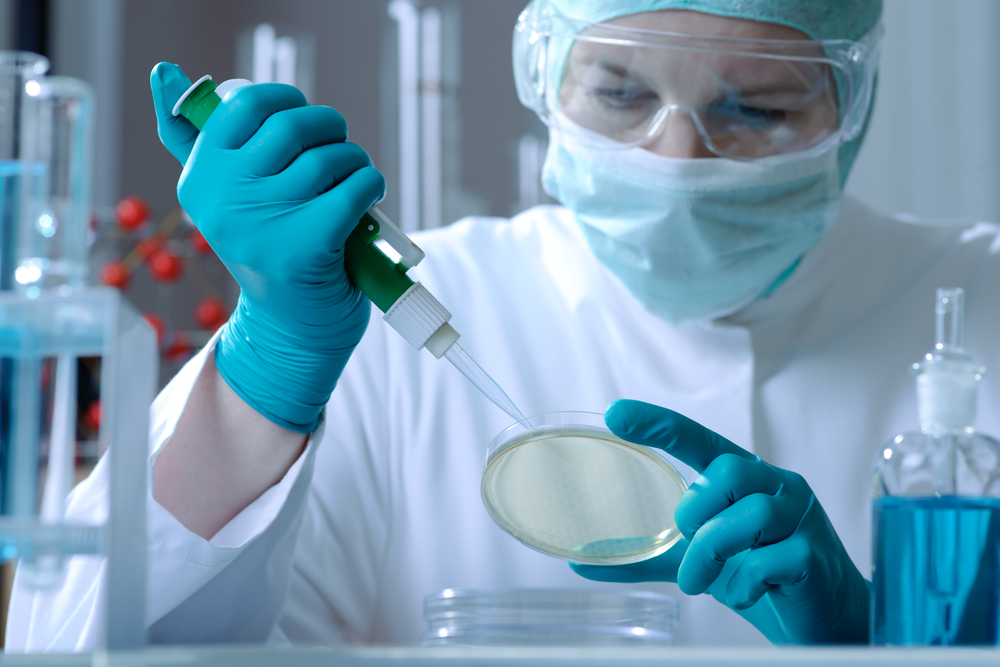
A brief history of the creation of nootropic drugs
1963 Synthesis of piracetam (pharmacologists S. Giurgea and V. Skondia, Belgium). The drug received the commercial name “Nootropil”, did not have serious side effects that are characteristic of psychostimulants and at the same time had good effect– increased mental performance, improved concentration and memory.
1972 A new term was introduced - “nootropics” (K. Giurgea). The term was proposed for a group of drugs that were intended to improve intellectual memory, attention, and learning.
Nootropics did not have a characteristic psychostimulating effect and, moreover, had additional characteristics - they could ensure better absorption of oxygen by tissues and thereby prevent hypoxia.
Nootropic drugs, unlike psychostimulant drugs, did not have negative side effect on the body, which is why they immediately became popular. The pharmacological effect of nootropic substances was mild and appeared some time after the start of treatment.
2000s. Currently, more than ten original nootropics have been synthesized. The pyrrolidine series (racetams) is:
- Oxiracetam;
- Etiracetam;
- Aniracetam;
- Duprcetam;
- Pramiracetam;
- Cebracetam;
- Rolisiracetam;
- Detiracetam;
- Nefiracetam;
- Isacetam.
There are other groups of nootropics that include:
- Cholinergic drugs.
- GABAergic drugs (Aminalon).
- Glutamatergic agents.
- Peptidergic substances.
The nootropic active substance can also be found in medicines belonging to other pharmacological groups with different chemical origins. 
Neurological diseases and nootropics
Neurological diseases and their increase are associated with increasing life expectancy and diseases associated with old age. The total number of cases of disability and mortality in general today directly depend on cerebrovascular diseases, which significantly reduces the percentage of the healthy population.
Development of pharmacology for lately also affected medications intended to restore the vascular system of the brain. Synthetic, qualitatively new drugs with nootropic effects without negative side effects are appearing on pharmacy shelves.
The development trend of the nootropic drugs market shows a steady increase in the use of this drug group, which gives reason to assume a further expansion of its use.
Nootropic substances are characterized by an increased stress-protective effect; they are a positive factor in the restoration of brain activity after traumatic brain injury, stroke, intoxication and infections.
Nootropics help restore the emotional-volitional sphere of a person. As a result of their use, interest in activities appears, the patient becomes self-confident, and his mental and physical performance returns to normal.
Nootropics significantly improve blood circulation and microcirculation, normalize the rheological properties of blood, and reduce platelet aggregation and adhesion.
The medicinal group is characterized by good antioxidant, neurotrophic, tranquilizing, activating, antidepressant and antiasthenic effects. Nootropics relieve headaches and dizziness.
Piracetam, for example, has been found to promote recovery immune system, and also improves regional blood flow and helps scarring of the ulcerative defect, therefore a number of nootropic drugs are already used to treat coronary heart disease and peptic ulcer disease.
Nootropics are used as therapeutic drugs for pathologies of the central nervous system, to relieve fatigue, during the aging of the body and in extreme cases.
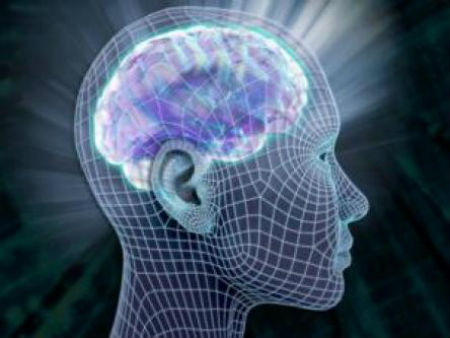
Nootropics are used to treat:
Cerebrovascular accidents;
atherosclerosis;
head injuries;
comatose states;
stroke, hypoxia;
neurointoxication, neuroinfection;
vascular dementia;
Alzheimer's disease;
encephalopathy;
asthenic syndrome;
vegetative dystonia;
mental retardation;
cerebral palsy;
meningoencephalitis;
encephalomyelitis;
neuroses;
enuresis and tics;
stuttering;
Meniere's disease;
asthenia;
depressive states;
epilepsy;
migraines.
Nootropics have proven themselves as an effective comprehensive component of drug therapy for poisoning with narcotic and alcoholic substances and for the treatment of chronic alcoholism.
In modern pharmacology, work is underway to combine nootropic substances with other drugs to enhance antioxidant, anti-ischemic and mnemotropic properties. 
Indications for use
Adults:
- traumatic brain injuries;
- cerebrovascular accident;
- cerebral atherosclerosis, especially manifested by softening of the brain;
- vascular diseases of the brain (especially arterial hypertension, accompanied by severe dizziness, persistent headaches, decreased quality of life);
- cerebral chronic failure, accompanied by a decrease in memory and intellectual abilities;
- encephalopathy, especially alcoholic;
- polyneuritis;
- motion sickness syndrome.
Children:
- traumatic brain injury, including postpartum;
- cerebral palsy;
- mental retardation of various origins;
- motion sickness syndrome.
Directions for use and doses
Aminalon is taken before meals.
Adults. The initial dose is 0.5 g 2 times a day. On the third to fifth day, the dose, if necessary, is increased to one g twice a day. The daily dose is from one g in the initial period of treatment to two g in the subsequent period.
Children. From one year to three years – one g per day. Four to six years - 1.5 g per day. After seven years, two g per day. The daily dose is divided into two doses.
The course of treatment is determined by the doctor after establishing a diagnosis and a comprehensive study and depends on the individual characteristics of the body, the course of the disease, the patient’s condition at the time of treatment, the set therapeutic goals, and the effect of treatment. Typically, the minimum course of therapy lasts two to three weeks, the maximum – at least two to four months.
If indicated, the course is repeated after six months.
Symptomatic treatment for motion sickness syndrome.
Adults. 0.5 g Aminalon once. Then continue taking the drug for three to four days.
Children. 0.25 g twice a day. Continue treatment for three to four days.
Prevention of motion sickness syndrome before travel. Adults. 0.5 g twice a day three days before the trip, 0.5 g immediately before the trip.
Aminalon and psychiatry
One of the very first nootropic-like drugs that began to be successfully used in psychiatry was Aminalon.
Aminalon has a wide range of indications, but it is most often prescribed:
- with various manifestations of cerebral pathology (cerebrasthenic and encephalopathic disorders of various origins, manifested in chronic and persistent or dynamic disorders of cerebral blood supply);
- for organic pathologies of the central nervous system;
- with mental retardation of various origins in patients of different age groups.
An important problem is the development of dementia, which forms at a late stage of organic lesions of the central nervous system. Dementia is difficult to treat, which is why the issue of its treatment is extremely acute throughout the world.
The experience of using Aminalon for the treatment of patients with organic lesions and dementia began to be applied in 1983 (M. M. Saarma). The drug was taken by a group of patients (17 people) for six weeks. The patients suffered from dementia (traumatic and atherosclerotic origin) and age-related dementia.
Research result. Two groups of patients, one of which took Aminalon 1.5 g per day and the second control group (25 people), a placebo group, showed:
- condition of the placebo group – no changes;
- the dynamics of memory and intellectual abilities changed for the better for the group taking the drug.
To interpret the results of the study, unified scale methods and six experimental psychological tests specially developed for this purpose were used. 
Aminalon and sports
Aminalon is allowed in sports:
- when learning new elements of technique in complex coordination sports;
- for disorders of the central nervous system that arose as a result of physical and psycho-emotional stress.
Side effects
The drug has virtually no side effects.
Rare side effects:
- dyspepsia;
- feeling of heat;
- difficulty falling asleep;
- surges in blood pressure (at the beginning of the course of treatment).
Side effects are short-term and do not require discontinuation of the drug. If necessary, dosage reduction is allowed.
Overdose
An overdose is possible only if the recommended doses are significantly exceeded.
The main symptoms of overdose include:
- nausea;
- vomiting;
- dyspeptic disorders;
- headache;
- increased body temperature;
- blood pressure surges;
- sleep disturbance.
If the dose is exceeded, you must stop using Aminalon and consult a doctor. Treatment is symptomatic.
Contraindications
Contraindications to taking the drug:
- individual intolerance to the components of the drug;
- gestation period;
- breast-feeding;
- children under five years of age.
Drug interactions
Aminalon enhances the pharmacological effect:
- benzodiazepine drugs;
- sleeping pills;
- anticonvulsants.

Special instructions for doctors and patients
In the initial stage of therapy, it is necessary to monitor blood pressure, as fluctuations in blood pressure are possible.
You should not take the drug before bedtime, as you may have difficulty falling asleep.
With a long course of treatment, caution is required for patients who deal with hazardous activities (operating machinery, etc.), where increased attention and high speed of psychomotor reactions are required. Therefore, at the initial stage of treatment, you should refrain from hazardous activities.
Synonyms
- Gammalon
- GABA
- Ganevrin
- Apogamma,
- Encefalon
- Gaballon
- Gamarex
- Gammaneuron
- Gammar
- Gammasol
- Myelogen
- Mielomad
- Gamma-aminobutyric acid.
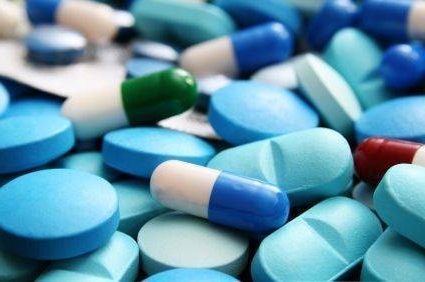
Generics
Analogues of the drug that match the active substance:
- Amilonosar (Russia)
- Picamilon (Russia)
- Picanoil (Russia)
- Pikogam (Russia)
A generic is a full-fledged medicinal product that is similar to the original dosage form. pharmacological properties and proven:
- pharmaceutical;
- biological;
- therapeutic equivalence.
A generic drug usually differs from the original drug in the presence of different excipients and technological process.
In Russia, generics have their own characteristics:
- the highest percentage in the world market;
- the appearance of some generics earlier than original drugs;
- lack of information about equivalence with the analogue;
- low cost.
About 80% of the price of any original drug is the cost of the research:
- on therapeutic effectiveness;
- on health safety.
About 20% of the price is the cost of synthesis of medicinal substances. This whole process takes a long time, is very expensive, and includes three stages of research in a clinical setting.
Advantages of high-quality generics:
- affordable price;
- choice for doctor and patient.
The popularity of generics and ever-growing competition is a driving factor for companies involved in the development and production of new original drugs to more actively carry out research activities and use new developments.
Companies that produce generics do not incur huge expenses; their task is to repeat what has already been developed before them. Hence the cost of the drug is more affordable for the consumer.
Generics are available for any medicine, with the exception of recently created medicines that have patent protection. This also applies to unique drugs for the treatment of cancer and AIDS.
On the pages of modern medical publications there are constantly debates about original drugs and generics. Most of the works presented in specialized journals show the heterogeneity of methodological approaches in research and interpretation of the data obtained, therefore it is very difficult to draw an unambiguous conclusion.
We can definitely say that a high-quality generic drug manufactured by a serious manufacturing company that is trusted in the market is not inferior to the original drug.
It should be noted that the WHO Resolution (2004) contains recommendations for doctors to explain to patients the differences between a generic and an original drug.
Aminalon, like many other nootropics, is not included in the US Pharmacopoeia. In Europe, the drug Gammalon and other medications with the active ingredient aminobutyric acid are used even in pediatrics.
